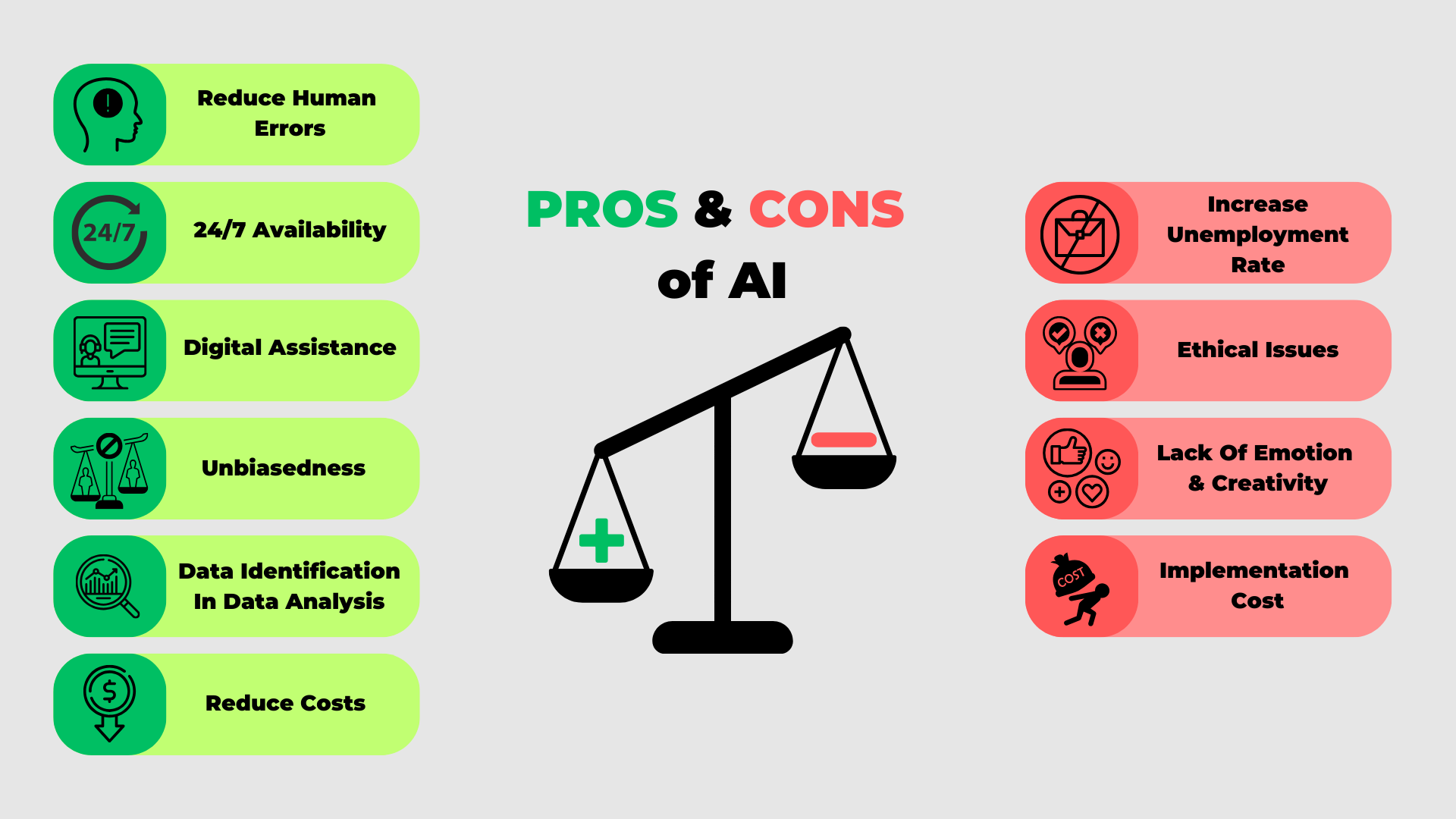The future is here. There is no doubt that Artificial Intelligence in Education is growing in popularity among educators and students. Educators employ AI in the form of EdTech tools to help them create lesson plans and compute student grades, while learners can use AI to help them complete projects, homework, and even research papers. While we cannot dispute that Artificial Intelligence in 2024 is becoming a part of our lives, there are a few benefits and cons of AI that require additional consideration and are still being debated.

Advantages of AI in Education
1. Enhanced student engagement and motivation
AI applications in education can improve the learning experience in a variety of ways, including tailored learning exercises powered by AI algorithms and rapid feedback and communication enabled by AI natural language processing. AI can also be used to improve gamified learning, so making learning more interesting, engaging, and rewarding. Using AI tools can help instructors adopt a more interactive teaching style, which may result in higher engagement and motivation in the classroom, as well as enhanced learning outcomes.
2. Enhancing Student Performance
Another key advantage of artificial intelligence in education is its ability to help improve student performance through improved feedback. AI-powered systems can assess students' progress, provide focused feedback, and highlight areas where they may grow. Furthermore, AI can track students' behavior patterns, measure their concentration levels, and determine whether they require additional help with specific subjects, granular regions, or skills. Instant AI-powered feedback, combined with better learning experiences, is projected to propel students' abilities to new heights.
3. Cost-Effective Learning
Using AI in Education can also drastically cut the cost of education for educational institutions when used to its full capacity. AI can automate a variety of activities entrusted to administrators, instructors, IT, and others. For example, AI can handle daily duties like grading, scheduling, data management, and even tutoring. AI in education allows educational institutions to save money by reducing the resources necessary to run efficiently, boosting cost-effectiveness.
4. Continuous Evaluation and Improvement in the long run
The final benefit of AI is ongoing assessment and advancement. Teachers may effortlessly gather, examine, and get reports on student behavior patterns and learning results via AI-powered EdTech solutions. Artificial Intelligence (AI) has the potential to yield significant benefits for educators through predictive analytics. These benefits include the ability to forecast future performance, offer tailored interventions, identify at-risk children early, and improve teaching tactics.
Cons of AI in Education
1. A Dehumanizing Educational Process
The potential for AI to dehumanize the educational process is one of the main drawbacks. The nuanced approach that a human teacher may provide to a class may be lost on pupils when AI algorithms create the content and set the lesson's pace. Furthermore, AI algorithms have the potential to reinforce bias, which means that they might not be able to offer a varied, inclusive curriculum that is individualized for each student.
2. Reliance on Technology
A potential concern with schools depending more and more on AI-powered solutions is that teachers and kids can become overly dependent on technology. Long-term, this reliance may lead to disregarding crucial conventional teaching techniques as well as the failure to foster critical thinking and problem-solving abilities.
3. Danger to the Security of Teachers' Jobs
The threats to the job security of teachers are at the top of the list. Although this hasn't happened yet, it's a worry that the development and application of AI may have an impact on the need for particular positions in the education sector. There might be less need for human educators as AI continues to automate more parts of the educational process, which could result in increased productivity as well as possible job losses.
4. Expensive for Teachers to Adopt
The fact that implementing AI in the classroom might be expensive for instructors is another drawback. Not every educational organization, including schools, has a set amount set aside just for purchasing AI tools and technology. Furthermore, it might be too expensive right now to introduce AI in schools on a large scale. It might be costly and difficult to maintain if the teacher is the one paying for it.
"Which AI tool can help me as a student in a positive way?"

StudyGPT:
Students can benefit greatly from StudyGPT in a variety of ways. With resources and study materials catered to your own needs, it can give individualized learning by adjusting to your particular learning style and speed. This makes studying possible in a more effective and efficient manner. Furthermore, StudyGPT is accessible around-the-clock, giving you flexibility and convenience in asking questions and studying whenever it's convenient for you. Besides, it can give you instantaneous feedback on your work so you can see any flaws and correct them right away. This prompt answer can improve understanding and hasten the learning process.

Conclusion
Finally, how AI is implemented and managed will determine its impact on pupils. When utilized properly and ethically, AI can improve learning outcomes, provide meaningful feedback, and help instructors deliver quality education. However, data privacy, algorithmic bias, and ensuring that AI complements, rather than replaces, human interaction and assistance in the learning process must all be carefully considered. Finally, leveraging the benefits of AI for students requires a balanced approach that capitalizes on its strengths while tackling its problems.